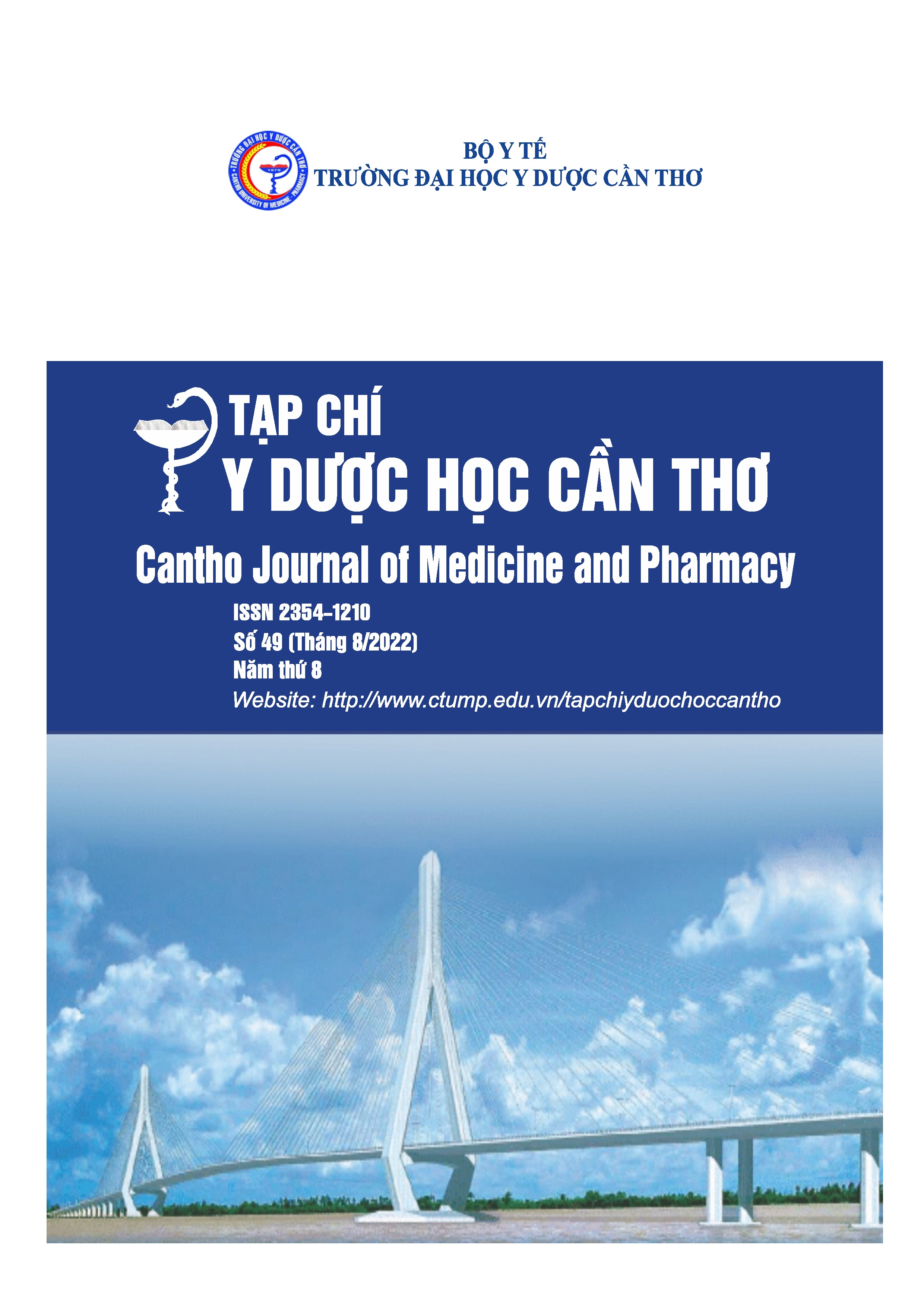CLINICAL, SUBCLINICAL CHARACTERISTICS AND RESULTS OF CONCURRENT CHEMORADIOTHERAPY AFTER SURGERY FOR RECTAL CANCER AT CAN THO ONCOLOGY HOSPITAL IN 2020-2022
Main Article Content
Abstract
Background: Rectal cancer is a curable disease if detected at an early stage. In the treatment of rectal cancer, surgery is still the basic radical treatment method, but when the disease is at an advanced stage, surgery alone will face many limitations. To improve the outcome of these patients, concurrent chemoradiotherapy after surgery has been proposed. Objectives: To survey some clinical and subclinical characteristics, to evaluate the results and find out some factors related to the treatment results of chemoradiotherapy simultaneously after surgery in patients with rectal cancer from May 2020 to March 2022. Materials and methods: All rectal cancer patients had surgery from 4-6 weeks,did not receive preoperative treatment, received chemotherapy. This was a descriptive study. Results: Sex: male/female=1.13. Most of the patients studied were over 40 years old (96.7%). There were 29% lower third rectal cancer; 24.2% middle third rectal cancer; 27.4% upper third rectal cancer and 19.4% rectosigmoid junction cancer. The recorded surgical methods were included: low anterior resection (50%), anterior resection (30.6%), Miles (17.7%), ultra-low anterior resection (1.6%). The estimated 2 year disease free survival was: 83.9 ± 8.2%. Common site of recurrence was: liver (60%). The estimated 2 year overall survival was: 94.5 ± 3.1%. The analysis showed a statistically significant difference between diabetes mellitus, CEA levels, tumor macroscopicity, disease stage, number of metastatic nodes and disease – free survival. Conclusion: Simultaneous chemoradiotherapy after surgery helps to control well locally, reduces local recurrence rate, prolongs disease – free survival and overall survival.
Article Details
Keywords
Rectal cancer, concurrent chemoradiotherapy
References
2. Nguyễn Duy Sinh và cộng sự (2003), “Xạ trị sau mổ ung thư trực tràng”, Tạp chí Y học, tập 7 số 4, chuyên đề Ung bướu học, tr.178.
3. Huỳnh Quyết Thắng, Hồ Long Hiển và cộng sự (2013), “Ghi nhận ung thư Cần Thơ giai đoạn 2005 – 2011”, Tạp chí Ung thư học, số 3, tr.50-60.
4. La Vân Trường và cộng sự (2017), “Kết quả điều trị hóa – xạ trị đồng thời điều trị bổ trợ ung thư trực tràng giai đoạn II – III sau phẫu thuật triệt căn”, Tạp chí y học Việt Nam, số 455, tr.171-176.
5. Lu NN, Jin J, Wang SL, et al. (2015), “Postoperative Capecitabine with Concurrent IntensityModulated Radiotherapy or Three – Dimensional Conformal Radiotherapy for Patients with Stage II and III Rectal Cancer”, PLoS ONE, 10:e0124601.
6. GLOBOCAN (2018), “Global cancer statistics 2018: GLOBOCAN estimates of incidence and mortality worldwide for 36 cancers in 185 countries”, CA A Cancer Journal for Clinicians 68, suppl 8, Colorectal cancer, DOI:10.3322/caac.21492.
7. Ji Eun Yoon, Soo Young Lee et al. (2019), “Oncologic Outcomes of Postoperative Chemoradiotherapy Versus Chemotherapy Alone in Stage II and III Upper Rectal Cancer”, Annals of Coloproctology 35(3), pp.137-143. DOI:10.3393/ac.2018.09.28


